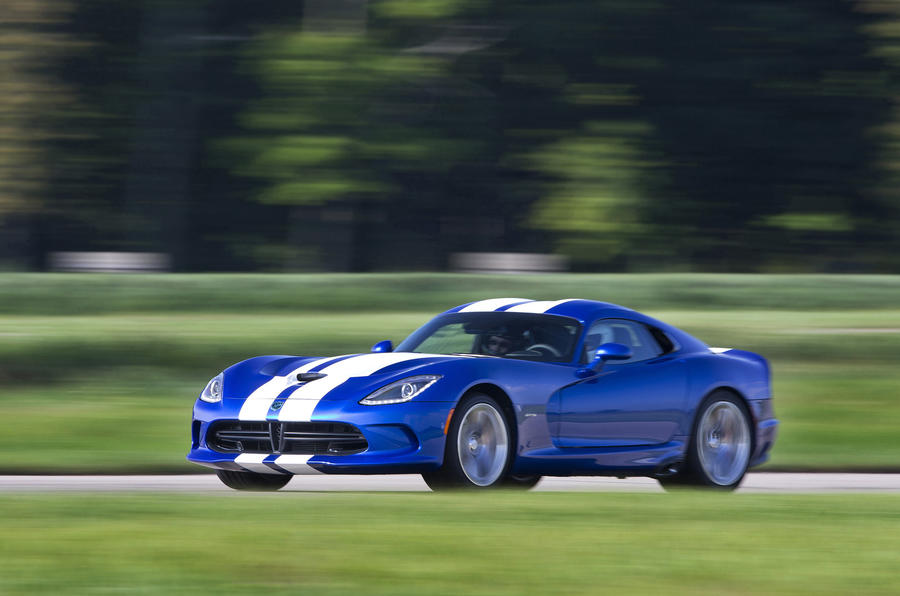What is it?
It may look the same as it always has, but this is a comprehensively re-engineered version of the Dodge Viper supercar. And we should count ourselves lucky, because it nearly didn’t happen at all. The Viper came close to going down the same path as TVR.
Chrysler was going through bankruptcy in 2008 and they didn’t feel a 600bhp sports car was good PR. The V10-powered American icon was put up for sale. Then Fiat came along and saved Chrysler – and the Viper.
It has taken Chrysler 20 years to offer stability control, navigation, cruise control, automatic climate control and decent seats on the Viper, but it has finally happened, promising to make the new car more refined and more usable than any of its predecessors.
Previous-generation Vipers were known as the Dodge Viper, Chrysler Viper, or Dodge SRT-10, depending on your country. This new version is called the SRT Viper because Chrysler’s in-house ‘Street and Racing Technology’ division is now a brand.
SRT can produce 2200 cars a year, but official European sales aren’t planned at this time. That doesn’t mean a handful won’t make it across the pond, starting in early 2013.
What's it like?
Those who do go to the trouble of importing a new SRT Viper will immediately feel a newly refined but still very raw American sports car. Our press drive was limited to near-production spec development cars on a racing circuit—no street driving was offered.
In case we doubted the latest improvements, Chrysler offered us a handful of laps in the old Viper. This comparison reminded us just how far the brutal beast has come. Chassis developments give the Viper depth and balance around the circuit that previous versions lacked.
The Viper has always been fast but they were also unrefined and, frankly, a bit lethal. The new Viper’s updated steering - still hydraulic - is far more linear and offers good feel and accuracy.
A close-ratio six-speed manual gearbox and shorter final drive ratio liven up the 631bhp, 8.4-litre V10. It’s a transmission that’s now a pleasure instead of a chore to row through the gears. An aluminium flywheel and well-tuned drive-by-wire throttle also contribute to that excellent engine response.
A tweaked exhaust system results in a raspier, more aggressive sound instead of the delivery truck note of past versions. Just remember not to put your hand - or leg - on the door sill as the side-exit exhaust gets very hot. There’s no doubt this is still a Viper.
Unlike in the old Viper, we quickly got up to speed at the circuit. The nicely judged stability control system helped, allowing a large amount of fun even in the default setting. The base Viper, known somewhat confusingly as the SRT, has two stability control settings - on or fully off.
The more luxurious GTS model offers two additional settings. There is a more lenient sport mode and a track setting that keeps yaw control but disables the traction control. All settings are quickly and easily toggled via a simple button on the steering wheel. The standard launch control is just as quick to activate.
A speed-sensing limited-slip differential and 355-section rear Pirelli tyres give the Viper impressive traction, even with 600 lb ft of torque – the highest output of any normally aspirated automobile engine.

































Join the debate
Add your comment
For the second week in a row,
For the second week in a row, as soon as a car is featured on the latest episode of Top Gear, an Autocar article appears, albeit two this time - one about the Vanquish, the other about the Viper!
I'm glad the Co2 is N/A i
I'm glad the Co2 is N/A i would love to see how long you could empty that tank.
Dodge Came Back
WOW! From bankruptcy this is what happened after Fiat bought Dodge, and I thought dodge is now dead after hearing the news but now I am glad it came back onto the road with a nice racing car.